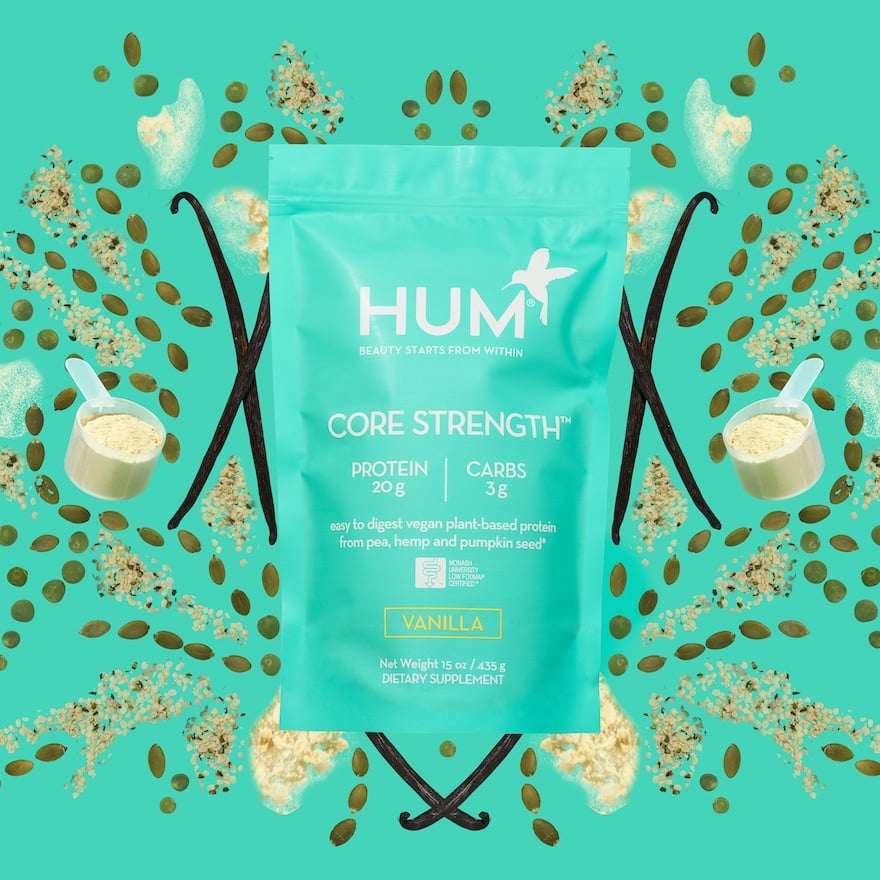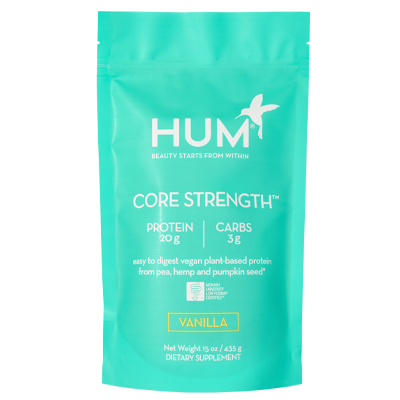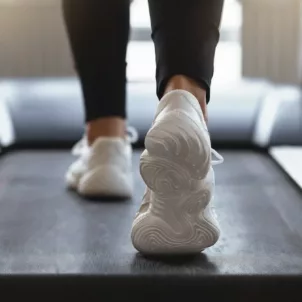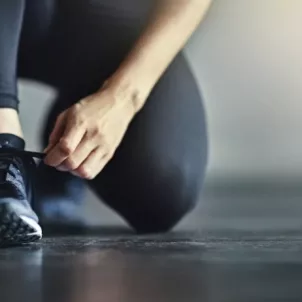It may seem counterintuitive, but workout recovery is just as important for your fitness goals as your actual workouts. Below, physical therapists and personal trainers explain why you should take rest days and the importance of muscle recovery.
It’s commendable to show up for your workouts and make exercise a regular part of your routine. But balancing tough training days with ample recovery is one habit you definitely don’t want to pass on. Whether you’re chasing a faster mile time, want to PR your deadlifts, or simply want to feel strong and fit, workout recovery is what’s ultimately going to help you reach your goals.
But what should your post-workout recovery look like, exactly? And how many rest days a week do you need? Read on to learn more about what to do on rest days, what post-workout recovery entails, and workout recovery tools and equipment you can use to help ease muscle soreness and joint stiffness.
What is Post-Workout Recovery?
Workout recovery is the time your muscles and the rest of your body regenerate between workouts. “Training is only where adaptation starts–most of the growth actually occurs when we recover from our training sessions,” explains Cameron Yuen, PT, DPT, CSCS, a physical therapist at Bespoke Treatments in New York City.
In fact, without adequate workout recovery, you can get the opposite results you’re hoping for. “Instead of our body going into an anabolic period, we stay catabolic,” Yuen explains. “We actually lose or weaken the muscle, bone, and connective tissue if we do not rest enough.”
That’s because when you work out and skip rest days (read: put constant stress on your body), it can put you at risk for injury and overtraining syndrome. Overtraining syndrome can cause more than just sore muscles: You may also develop sleep issues, such as insomnia, digestive problems, like diarrhea and constipation, and increased blood pressure, according to the Hospital for Special Surgery.
“If recovery becomes delayed and you’re not at your physical peak before the next workout, you run the risk of injury because the muscle fibers and joints are still broken down during performance,” says Ben Walker, personal trainer and owner of Anywhere Fitness. “This leads to further damage to muscle and tissues and can even result in fractures, sprains, and strains.”
How to Properly Recover After Your Workouts
So what is the best workout recovery? It’s actually a combination of different things inside and outside of the gym.
Static Stretching
After a workout, doing some static stretches – holding a muscle group in place for 25 to 40 seconds—activates your parasympathetic nervous system to help you relax.
“Static stretching tells your body that exercise has finished and the muscle groups should finally ‘switch off,’” Walker says. “It alerts the body to recover while increasing flexibility, range of motion, and blood flow in the joints and tissues.” Not only does static stretching reduce the risk of injury, it also improved the functional health of your muscles.
The rest of your recovery plan takes place outside of the gym.
Refuel With Protein and Carbohydrates
What you put on your plate also plays a big role in how well you recover, so focusing on nutrition is key. But your nutritional needs depend on your own body composition, the type of workout you’re doing, the duration, and intensity, Yuen says. But you generally want to increase your calorie intake—and ensure a majority of them are coming from protein and carbs.
While it’s tempting to indulge yourself in a cheeseburger and French fries after an intense sweat session, you want to be fueling up on high-quality protein and carbs. The best workout recovery foods are lean sources of protein, such as beef, chicken, pork, fish, eggs, tofu, and beans to help rebuild and repair your muscles.
“You’ll want to consume 18 to 24 grams of protein post-workout,” Walker says. “Proteins are made up of amino acids, which are needed to build and repair the muscle tissues once they’re broken down so the fibers can become stronger than before,” Walker says. Protein should be consumed 20 to 30 minutes after completing your routine, as this is when it is most effective for healing the body’s tissues, he adds
In fact, the American College of Sports Medicine (ACSM) recommends that you eat 1.2 to 1.7 grams of protein per kilogram (0.5 to 0.8 grams of protein per pound) of body weight daily. So someone who weighs 155 pounds should aim to eat around 78 to 124 grams of protein every day to gain muscle.
After crushing those burpees and back squats, your glycogen stores, which supply energy, are depleted. Eating carbohydrates post-workout is crucial for refilling your energy tanks. “The body needs energy to heal,” Walker says. “Choose fruits, vegetables, and grains, which are rich in vitamins to boost your metabolism and your body’s functions.”
If you’re not able to sit down and enjoy a post-workout snack or meal, you can make a post-workout recovery drink (think: a smoothie or shake) that combines protein and carbs. For example, you can combine a serving of protein powder, which typically has around 25 grams of protein, with baby spinach, banana, and natural peanut butter. HUM Nutrition’s Core Strength contains 20 grams of plant-based protein and is low FODMAP-certified (meaning it won’t cause bloating or indigestion).
Consuming 1.2 grams or more of carbohydrates per kilogram of body weight is ideal for replenishing glycogen stores post-workout, and combining protein with carbs after exercise may also help with restoring glycogen if your carb intake is lower, according to a 2018 review in Nutrients.
Rehydrate With Water
In addition to focusing on your nutrition, paying close attention to your hydration levels during and after exercise can aid your recovery. By rehydrating with water, you improve your circulation so that blood moves efficiently to deliver amino acids, oxygen, and other nutrients to your tissues and muscles, making them stronger, Walker explains.
“Your muscles contract when there is an optimal electrical gradient between your cells,” Yuen says. “Excess sweating or dehydration throws this balance off and makes it difficult for your muscles to perform work, but rehydrating with water and electrolytes following a workout can help your muscles function properly.”
Get Enough Sleep
You’ve likely heard it a million times before: Sleep is essential for recovery. Getting enough zzz’s each night allows your muscles to rebuild and grow. When you’re snoozing, your body releases growth hormone, which helps repair the tissues and muscle tears that you created during exercise, according to Sleep.org. Plus, a 2019 review in the International Journal of Sports Medicine found that sleep can help improve reaction time, accuracy, efficiency, and speed in athletes.
“Everyone requires different amounts of sleep, but it is extremely rare for someone to recover optimally with less than six hours,” Yuen says. “Your goal should be at least seven hours at night if you are stressing your body physically with the goal of growth and adaptation.”
Getting at least seven hours of sleep at night allows your body to not only repair itself, but also actually put on more muscle, bone, and mitochondria for energy, Yuen explains.
Workout Recovery Tools to Try
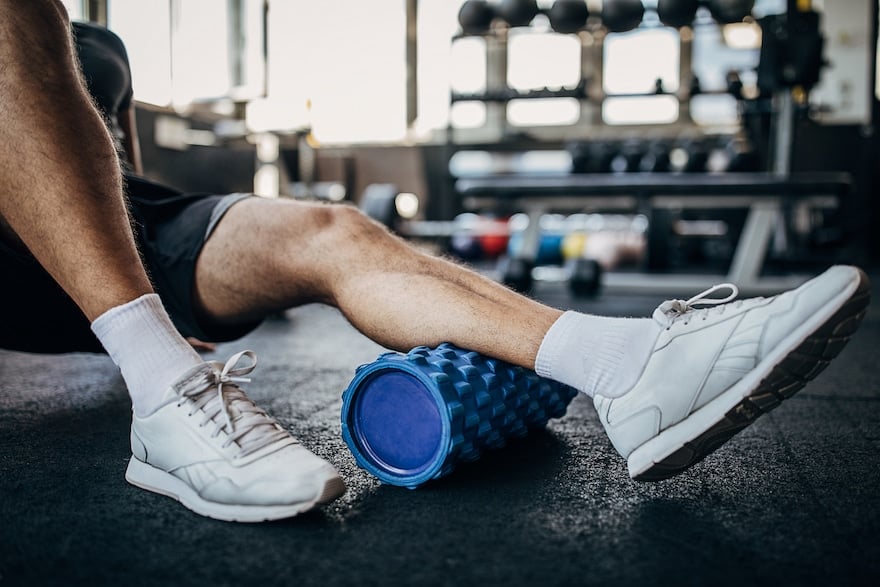
Although using workout recovery tools, such as foam rollers and massage guns, isn’t necessary, they can help support your recovery and give you an edge performance-wise.
Foam Rollers
Foam rolling, for instance, is a form of self-myofascial release (SMR) that helps reduce muscle soreness and tension by lengthening your muscle fibers and making the tissues more pliable, according to the American Council on Exercise (ACE).
“Massage or foam rolling can help with the tone or baseline electrical activity of the muscle,” Yuen says. “If certain muscle fibers remain in a high-tone state, they will be slower to repair and recover. Foam rolling and massage helps with this by relaxation and reduction in muscle tone,” Yuen says.
The key with foam rolling is to use comfortable pressure—you never want it to be painful. The best kind of foam roller is ultimately one that you’ll use. There are different types of foam rollers, including soft-core, high-density, textured, and vibrating, so try out a couple on different parts of your body and see which one you prefer.
Massage Guns
Massage guns (percussive therapy) are particularly helpful for targeting specific muscles that are often hard to reach, like your mid-back or shoulders.
“Percussive therapy is very beneficial for recovering muscle groups directly after a workout,” Walker says. “During this time, the muscle fibers have just broken down and pain signals are still radiating from various body parts to the brain.”
Massage guns work by delivering nutrients, oxygen, water, enzymes, and amino acids to your torn muscle fibers more quickly. This reduces inflammation and swelling and helps the microscopic tears in your muscles to repair faster so they’re restored for your next workout, Walker says.
Electric Muscle Stimulation
Electric muscle stimulation, or e-stim, sends electrical pulses to your muscles so they contract. In terms of recovery, these devices work very similarly to low-intensity aerobic activity, Yuen says.
“By stimulating the muscles directly you can get the blood moving in and out of the muscle with light contractions,” he says. “This also helps facilitate healing but does not have all the same benefits of very low-intensity aerobic activity.”
In other words, you’re probably better off walking or doing some yoga on your rest day.
How Many Rest Days Do You Need?
While all of the measures above are helpful in post-workout recovery, taking time off is still necessary for physical and mental wellbeing.
But how many rest days a week do you need? The number largely depends on your fitness level, the intensity of your workout, the type of exercise you do, and your goals. But a good rule of thumb is to take one full rest day a week, Yuen says.
When to Take Your Rest Days
Walker recommends 24 to 48 hours of recovery before training the same muscle group again. So let’s say you’re doing leg day, you want to give your calves, quads, and glutes a break for a full day or up to two days before working them out again (whether that’s going on a run or taking a cycling class.)
“This allows enough time to recover so we can train at our peak level for the following workout,” he says. “Beginners may need 48 to 72 hours for recovery between training each muscle group until they adapt to a more intermediate level.”
The ACE suggests taking 24 hours of rest between workouts for muscle endurance; 24 to 72 hours for hypertrophy (increasing muscle size); and 48 to 72 hours for strength and power.
Active Rest Day Suggestions
During your rest days, you want to do exactly that—rest. But you can make it an “active rest day” by doing some form of very low-intensity aerobic exercise. Low-intensity aerobic exercise can aid in promoting blood flow, which is necessary for recovery.
“Our body needs a constant supply of repair molecules (sugars, amino acids, etc.) after workouts, and it also needs to constantly move waste products out of the muscles after workouts,” Yuen explains. “By increasing the heart rate slightly, we dilate the blood vessels, get more blood moving, and get more waste going out, which helps speed the recovery process.” The key is to keep the heart rate just slightly elevated—it shouldn’t feel like a workout.
Walking, low-intensity cycling, or restorative yoga are some good ways to get some activity on your rest days; just make sure that you’re truly focusing on recovering and not getting your heart rate up too high or straining your muscles.
If you use a heart rate monitor or a fitness tracker, one formula Yuen recommends following is taking 180 and subtracting your age to calculate your maximum heart rate and aiming to stay well below that max number when you’re doing low-intensity exercise.
“This will help ensure that you are staying in an aerobic training zone to facilitate recovery,” he says.
